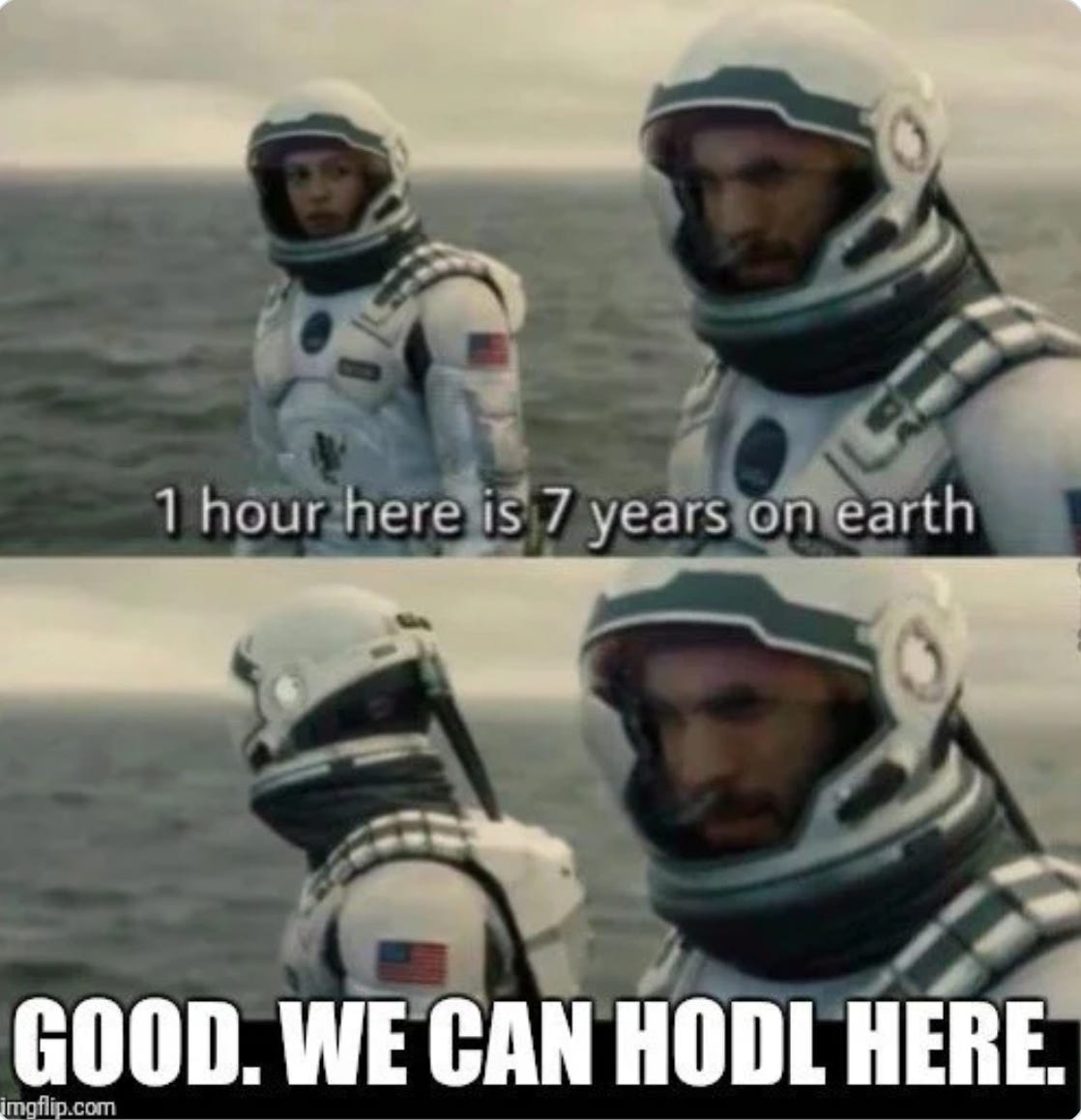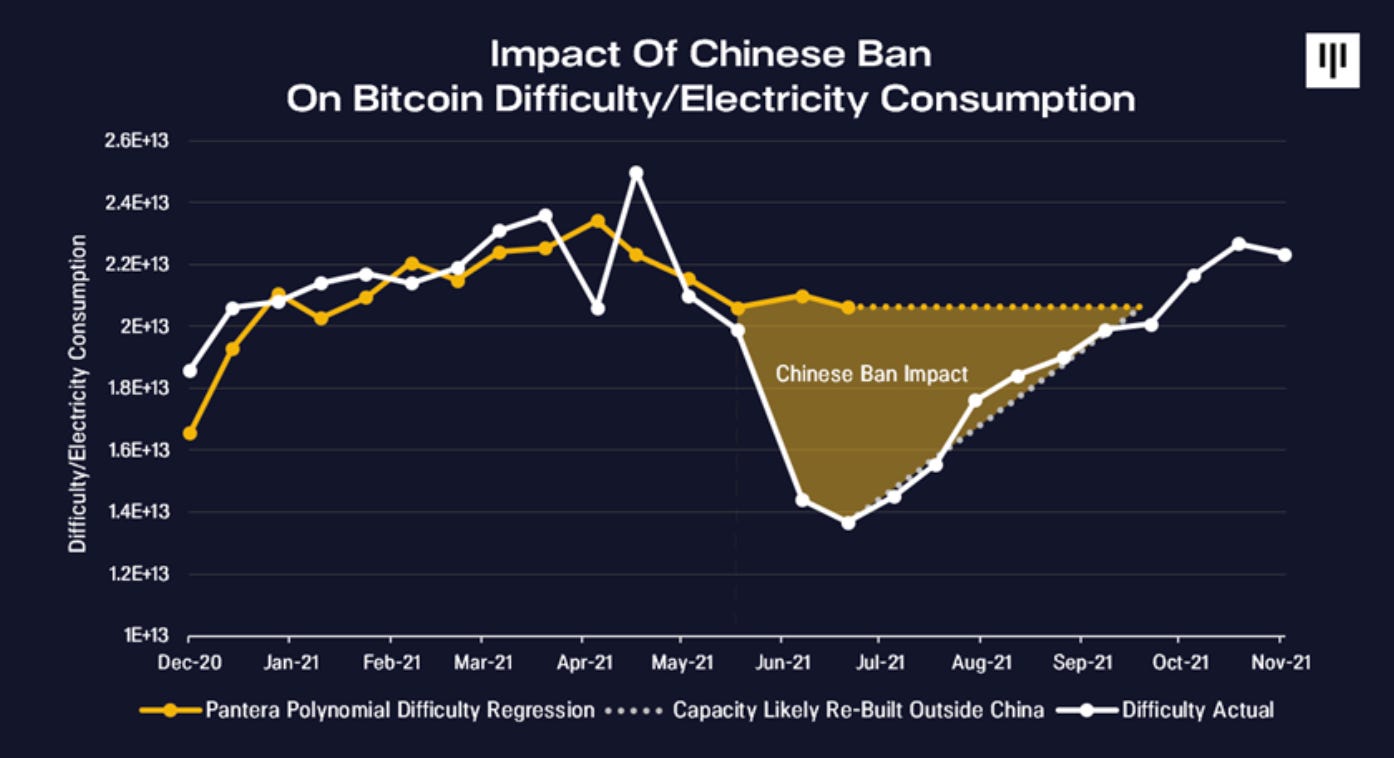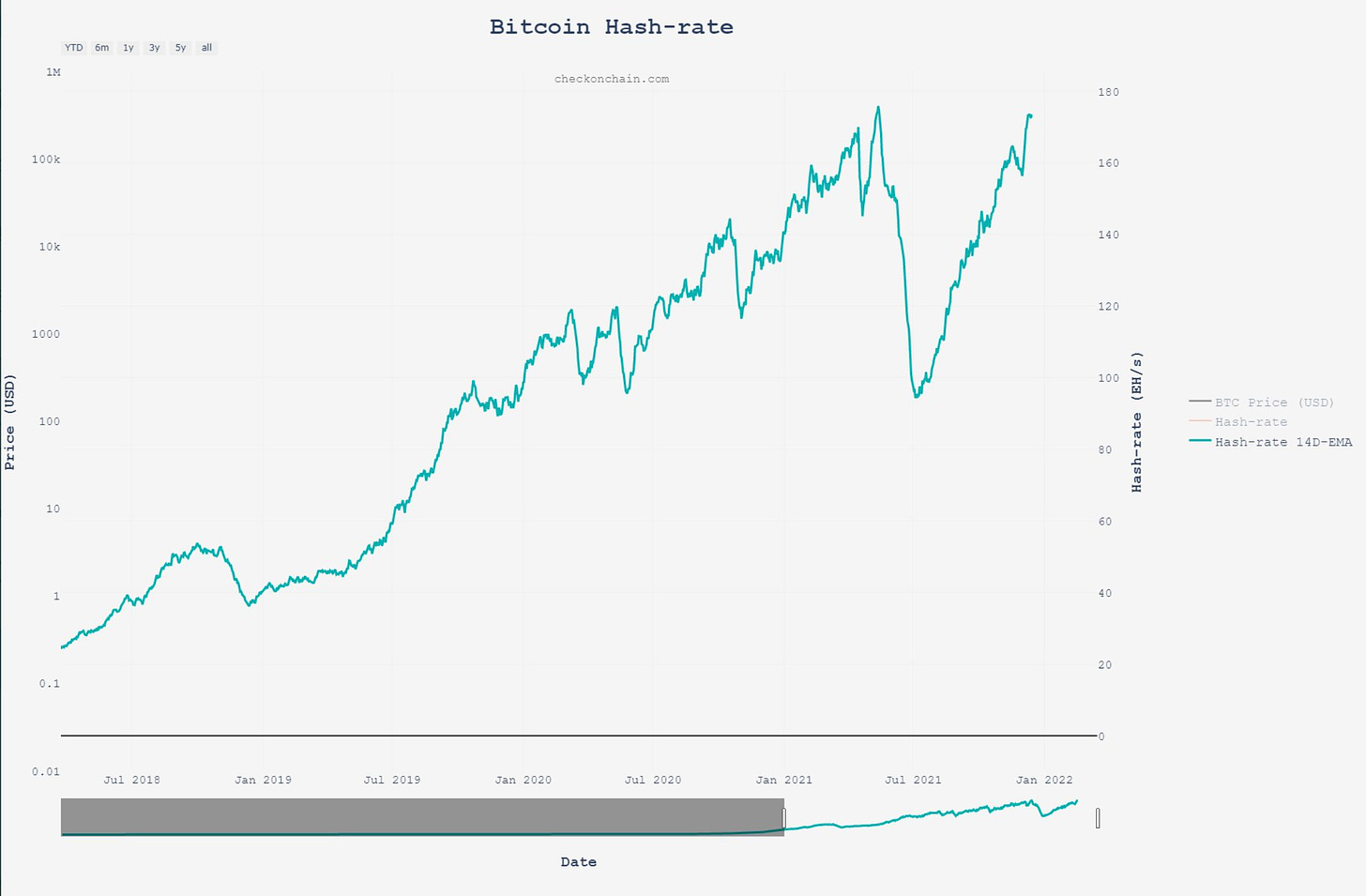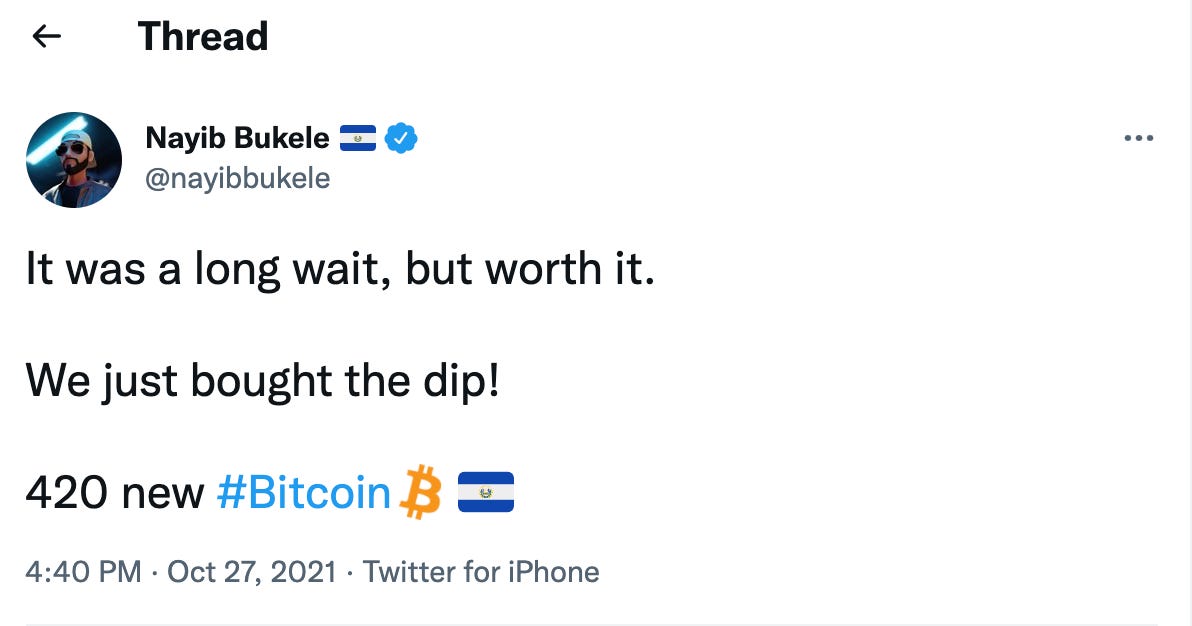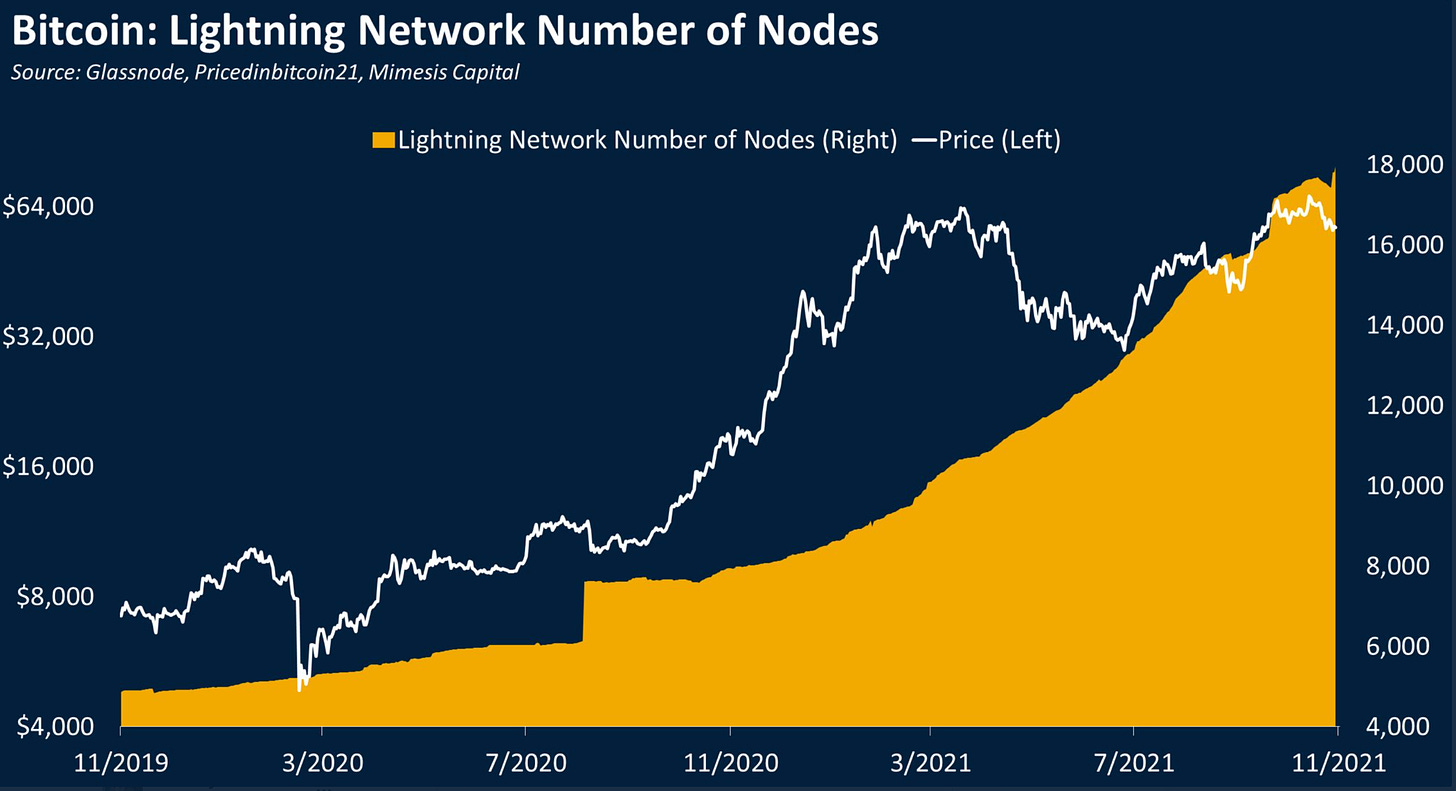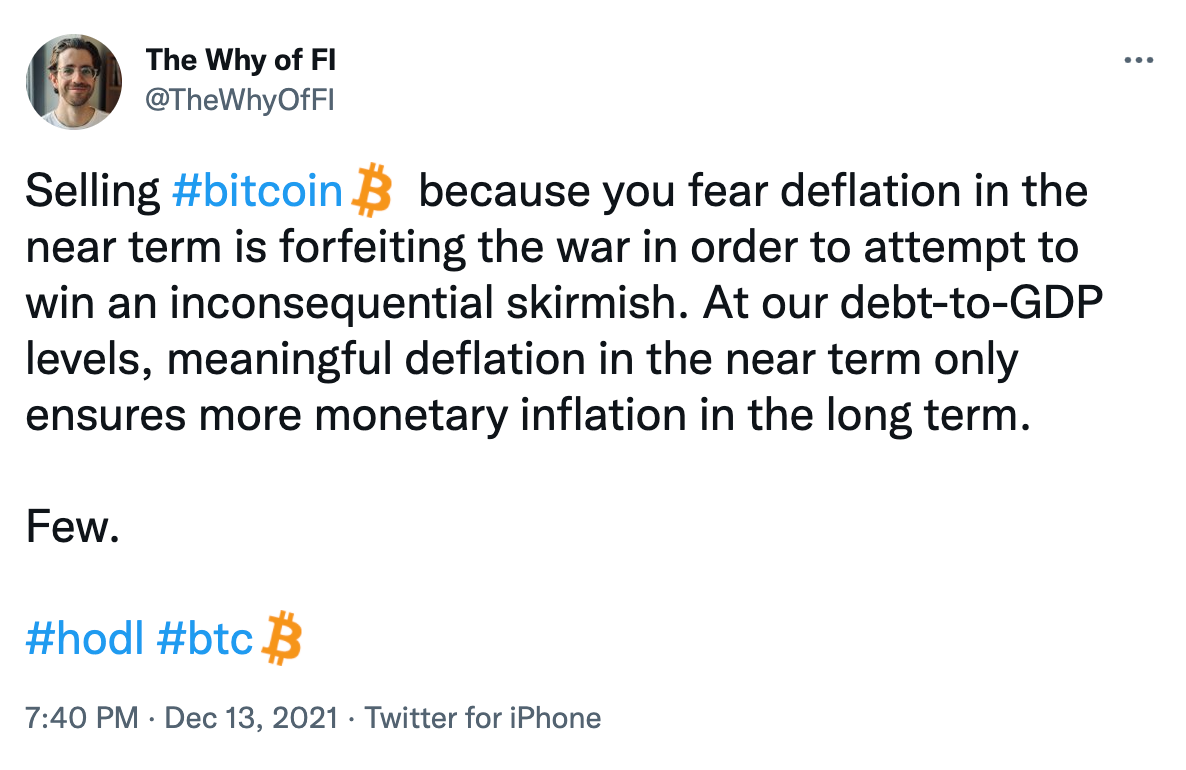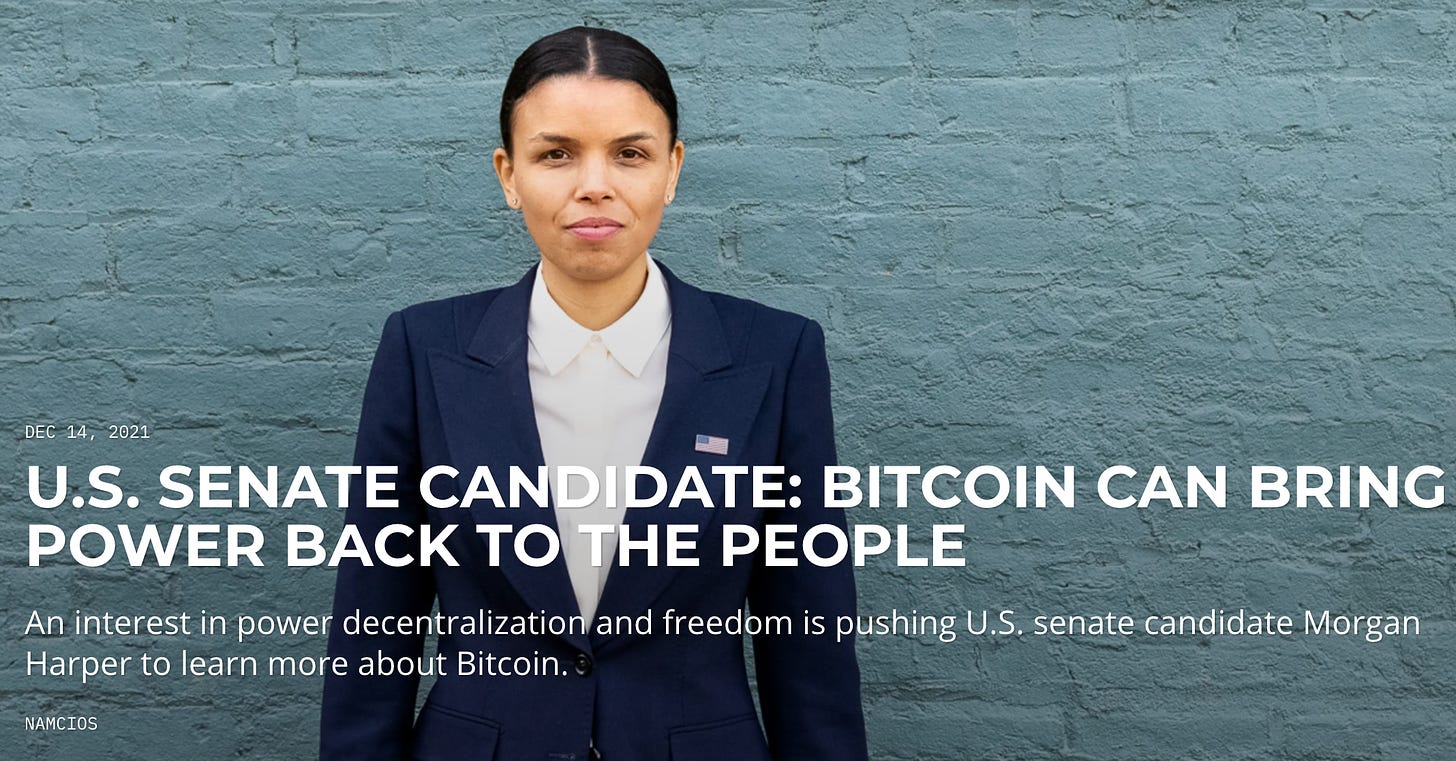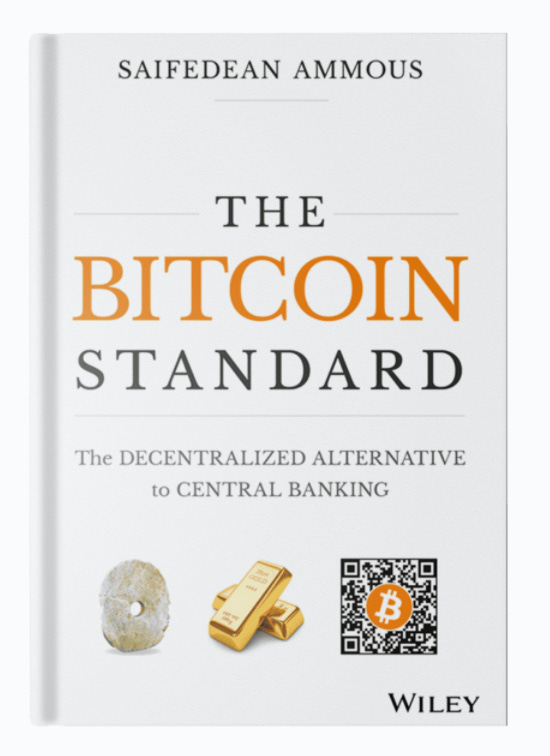Hey friends, welcome back to Think Bitcoin™. As always, if you have any questions or comments, feel free to reach out!
ANNOUNCEMENT: I will be taking next weekend off from the newsletter for Christmas. Wishing everybody a happy holidays!
In this issue:
Headlines/Insights: 2021 year-end wrap-up; Looking ahead to 2022 and what to expect
Content Round-Up: 3 articles, 1 podcast
Bonus: What to expect from this newsletter in 2022; the 3 pieces of content that shaped my thinking the most in 2021
As always, if you find this newsletter interesting or useful, please share it with others who might find it interesting or useful, too!
Headlines and Insights
2021: The year Bitcoin took over
On January 1, 2021, the price of Bitcoin was approximately $29,000. At the time of writing, the price has “dipped” almost 30% from its all-time high down to the lowly price of about $47,500. Think about that for a minute. I think many of us (understandably so) get unmoored from any semblance of sober, long-term perspective in the process of being emotionally blown around by the winds of comparatively short-term price movements. This is human and, with an asset as young, as free, and as filled with potential as Bitcoin, we will never be able to fully avoid the bidirectional adrenaline rushes of short-term price action. But in a year that saw so much fear, so much uncertainty, and so much doubt, I think it’s useful to remind ourselves how far we’ve come and how implacably Bitcoin, block by block, keeps doing its thing.
A year in Bitcoin feels like 5 years of real-life time.
So let’s recap all that happened in 2021 and envision where we might go in 2022.
In January, Elon Musk added “#bitcoin” to his Twitter bio, which led to feverish speculation about whether Tesla was going to buy bitcoin, whether Musk personally owned bitcoin, and what plans for Bitcoin Musk may have been harboring. In February, Tesla announced that they bought bitcoin and put it on their corporate balance sheet, which sent the price skyrocketing overnight. If you were in it at the time you probably remember checking your phone and reflexively uttering “holy shit.”
But February wasn’t just the month of Tesla buying bitcoin. Block (formerly known as Square), another public company (helmed by Bitcoin-advocate Jack Dorsey) also bought bitcoin for its corporate balance sheet. Michael Saylor, bitcoin whale and CEO of Microstrategy, organized a conference for corporations interested in acquiring bitcoin for their respective corporate treasuries.
In March and April, major banks started rolling out crypto desks, creating funds, and making investments in the space. We seemed to be on an unstoppable upward trajectory. But then the market did what the market always does in times of unbridled optimism: it got over-leveraged long.
In May, Elon Musk, announced that Tesla would no longer accept bitcoin payments out of concerns for bitcoin’s environmental impact. These concerns, it should be noted, were based on a common and prevalent misunderstanding of how Bitcoin uses energy and have since beens significantly walked back by Musk, who acknowledged that he, in his personal capacity, as well as Tesla and SpaceX, all still hold bitcoin.
But anyway, this caused some selling, which began to liquidate all of those heavily leveraged long positions, creating a downward cascade, that, experienced in real time, was quite an event. I distinctly remember Nic Carter hosting a Twitter Spaces that evening, open to everyone, in which we all commiserated and discussed. Asked how he was feeling that night, Carter simply stated “Pain.”
June was mixed. At the Bitcoin Conference in Miami, Jack Dorsey said “I don’t think there is anything more important in my lifetime to work on,” in reference to Bitcoin. He further noted, “if I were not at Square or Twitter, I would be working on bitcoin. If [bitcoin] needed more help than Square or Twitter, I would leave them for bitcoin.” Fast forward to the present day and Dorsey has, in fact, left Twitter, while Square has re-named itself Block, a not-so-subtle nod to Dorsey’s focus these days.
June was also the month when China really started cracking down on bitcoin mining, eventually banning it. This led to a historic drop in hash rate (almost 50%) followed by Bitcoin’s biggest downward difficulty adjustment ever. Those who were new to the space, along with many of the mainstream financial pundits, were declaring Bitcoin dead. Surely a ban from a country as large as China would be catastrophic, likely fatal, to the network, right? Wrong.
The most resilient, most antifragile network in the world did what it always does. It bounced back. Hash rate recovered and, as of the time of this writing, was back to all-time highs.
Also in June, El Salvador president, Nayib Bukele, announced that bitcoin would become legal tender in El Salvador.
Bitcoin, invented a mere 12 years ago, arrived on the nation-state stage, requiring each country to consider and formulate a Bitcoin policy. It’s hard to overstate how incredible the evolution has been.
President Bukele proceeded to buy the dip on multiple occasions, announcing it each time on Twitter with an irreverent insouciance that provoked the ire of every institutional economist on earth.
Throughout most of May, June, and July, the price of bitcoin was mired in the $30,000-$35,000 range.
In August, a last-minute provision was added to the U.S. Senate’s infrastructure bill, a key part of President Biden’s legislative agenda, that legally categorized many actors in the crypto space as “brokers,” subjecting many decidedly non-broker actors to logistically impossible tax reporting requirements. This kicked off a spirited and, to many, wholly unexpected fight. The crypto community rallied, called Senators, took to Twitter, and enlisted lobbyists in an all-out offensive to educate Congress on crypto and how its proposed legislation would stifle innovation, offshore jobs and economic growth, and make the U.S. uncompetitive in this important industry.
And it almost worked!
A bipartisan group of lawmakers formulated a correction to the problematic provision, while several other lawmakers openly acknowledged the irresponsibility and impracticality of the original language. Politicians from both parties admitted that they, and most of their colleagues, did not know much of anything about cryptocurrency, and that passing laws regulating things they don’t understand is not optimal.
Unfortunately, due mostly to procedural nuances, the original wording did make it into the final bill, which was eventually signed into law. Nevertheless, the experience represented a sea change in the relationship between the crypto space and Washington D.C., mostly in the sense that the latter was awakened to the passion of the crypto community, as well as to its growing size.
Athletes began to take portions of their salaries in bitcoin. Russell Okung was first. In July, Saquon Barkley announced that he would take 100% of his endorsement earnings in bitcoin. Tom Brady revealed himself as a bitcoin holder and said he would love to receive a portion of his salary in bitcoin. Aaron Rodgers took part of his salary in bitcoin, and Odell Beckham Jr. announced he would take all of his salary with the Rams this year in bitcoin.
Francis Suarez, the mayor of Miami, announced in November that he would be taking paychecks in bitcoin. A month or so later, he announced he would be putting a portion of his 401(k) into bitcoin.
All the while, the Lightning Network, which is a layer-2 technology that allows Bitcoin to scale and handle more transactions, exploded in use and popularity, much to the chagrin of every critic who claimed Bitcoin could never scale.
On the macroeconomic front, inflation (as measured by CPI) is now at 30-year highs, something Bitcoiners couldn’t possibly be less surprised about.
So yeah, quite a year.
Now, I have certainly not touched on everything that happened in Bitcoin this year. We haven’t even mentioned Taproot, or the price reaching nearly $70,000, or all of the infrastructure being built to transition the world onto a Bitcoin standard. But you get the idea. This was an absolutely monumental year in Bitcoin, and I think it’s only a preview of what’s to come in the next five years.
Looking Ahead to 2022
So what can we expect in 2022? Well, there are so many variables still at play, but I think we can safely expect the following:
More institutional involvement. 2021 was the year that institutions really started to get into the space. 2022 will see much more. Institutions and public companies have significant bureaucratic hurdles to clear before being able to invest in something like bitcoin, so it can take about a year to actually make an investment once the decision to do so is initially made. 2022 will be the year in which those decisions that were made in 2021 are finally actualized.
More regulatory clarity/intervention. I think this one is fairly obvious. Bitcoin and crypto are not flying under the regulatory radar anymore. Quite the contrary. SEC Chair Gary Gensler clearly has stablecoins and DeFi squarely in his crosshairs. I also think it’s obvious that he’s none too pleased with large crypto exchanges facilitating the buying and selling of what he considers to be primarily just a panoply of unregistered securities. So I don’t think it’s outside the realm of possibility that he brings an enforcement action against a major exchange, which would likely cause some short-term pain for the space. It is worth repeating, however, that Gensler has consistently signaled that he does not view Bitcoin as a security.
More adoption. More people are going to adopt Bitcoin. Period. The proverbial train has left the station. And this is going to play a key role in how lawmakers make policy.
I know some folks want to hear price predictions but, to be honest, that’s not really something I think about often. I have no idea what the price of bitcoin is going to be in six months. Nevertheless, I do think it’s possible that if the Fed proceeds with its accelerated tapering and actually makes a couple of rate hikes, that the price of Bitcoin could potentially be depressed in the short-term. However, as I’ve written many times, I don’t think the Fed can meaningfully tighten for very long without meaningfully harming the markets, which I think ultimately leads to more quantitative easing and loosening of policy in the long-term, which is bullish Bitcoin.
Content Round-Up
When I think about what 2022 might look like for Bitcoin, I see an accelerating interest from lawmakers (hopefully coupled with accelerating education of lawmakers). Politics in the U.S. is obviously fraught and acutely partisan. And it doesn’t help that most politicians are, comparatively speaking, rather old and over-incentivized to pursue re-election above all else. The 2022 mid-term elections will be the first time we really see vocal, committed pro-Bitcoin candidates from both sides, which will further underline how mainstream and how important Bitcoin is becoming.
With that in mind, I want to highlight some political perspectives on Bitcoin that are a little different from what we typically see in the space and worthy of more consideration, more air-time, and more discussion than they typically receive.
1. “For Progressive Bitcoiners, Offense is the Best Defense,” by Nicole Dobrow. Dobrow has been articulating and spreading the progressive case for Bitcoin for a while now. In this piece, she confronts the potential problem of Bitcoin devolving into a partisan issue in the U.S. In her words:
“Bitcoin has a public perception problem among Progressives. It’s still viewed as a predominantly conservative project. This is slowing adoption among left leaning voters who reflexively reject bitcoin on partisan grounds.”
Now, to be sure, there are some notable exceptions, but Bitcoin seems to have found a warmer welcome with Republican politicians. Yes, of course, Bitcoin doesn’t care what political party you belong to or whether you belong to any political party. And that’s great. But if we want the inevitable and imminent regulation to be thoughtful and not over-broad; if we want adoption to continue to grow; and if we want to create the best environment for Bitcoin, we can’t have half of the country and the government reflexively reject it simply and solely because the other party has embraced it. In other words, we can’t allow it to become reductively partisan.
What’s fascinating is that Bitcoin really does advance a lot of ideas that progressives ostensibly support, as Dobrow has pointed out in her work. Bitcoin is unique in the sense that, regardless of one’s political party, it’s quite difficult to be truly and unwaveringly anti-Bitcoin without contradicting a litany of other ideas and beliefs one purportedly holds. In this way, Bitcoin tends to reveal a lot about politicians.
So how does Dobrow propose we address this issue of a growing partisan narrative? She proposes going on the rhetorical offensive and reframing the discourse in ways that reveal Bitcoin’s value and usefulness to progressives.
If you like this piece, check out Dobrow’s previous piece, “Framing Bitcoin For Progressives.”
2. “U.S. Senate Candidate: Bitcoin Can Bring Power Back to the People,” an article by Namicos about Morgan Harper, a Democratic candidate for the U.S. Senate in Ohio. Speaking of progressives reframing the discourse around Bitcoin, Harper, who is lawyer and a former senior policy advisor at the Consumer Financial Protection Bureau, sees Bitcoin as a way to decentralize over-concentrated power, break up monopolies, and disempower exploitative financial intermediaries.
3. “Why Bitcoin Represents the Ultimate Single-Issue Voting Bloc,” by Dennis Porter. In this piece, Porter explores the history and power of single-issue voting blocs, before proposing that Bitcoin could become the most influential single-issue voting bloc we’ve ever seen. The reason, which I think is spot-on, is that most Bitcoiners believe that Bitcoin addresses a plethora of fundamental societal issues more effectively than our two political parties because, unlike them, Bitcoin credibly purports to fix the problem that begets all other problems: the corruption of the money itself.
Thus, this growing single-issue bloc is not choosing to focus on a single issue at the expense of or above all others (like, say, single-issue second amendment voters or abortion voters). Instead, the Bitcoin bloc believes that Bitcoin is the one issue that effectively address all other issues, which exist downstream of fixing the money.
In Porter’s words:
“Bitcoin is the ultimate single-issue voter bloc because it is unlike any singleissue voter bloc in history. Most SiVs fight for their chosen issue because they feel passionate about one thing, but Bitcoin has the unique ability to traverse many different issues and political ideologies. Many Bitcoiners believe that widespread Bitcoin adoption can fix a wide range of the world's problems. The vast majority of Bitcoiners see the biggest issues we face today as “downstream” from the money. We believe that by fixing the money we can make ground on many of the issues we care deeply about.”
4. “This Bitcoin Interview Will Blow Your Mind,” an interview on the Pomp Podcast with Jason Lowery. Lowery, an engineer in the Space Force currently studying at MIT, has a unique view of Bitcoin’s geopolitical import. He starts from the premise that “history is a time-partitioned ledger written by those who projected the most kinetic power and won.” Moreover, “those who project the most kinetic power earn the right to set the state and chain of custody of limited resources.” Bitcoin plays the same power projection game, a game that quite literally defines the global world order, but does so by projecting power with electricity, as opposed to with kinetic warfare. Lowery then proceeds to enumerate the truly fascinating implications of this difference.
Bonus/Miscellaneous
The 3 Most Edifying Pieces of Bitcoin Content I Consumed in 2021
I read, listened to, and watched an extraordinary amount of Bitcoin content in 2021. The three that have had the most lasting and most indelible influence on my thinking and my conceptualization are as follows.
1. The Bitcoin Standard by Saifedean Ammous.
2. Alex Gladstein’s articles in Bitcoin Magazine, particularly Uncovering the Hidden Costs of the Petrodollar.
3. The Booth Series - a series of podcast interviews with Jeff Booth on Robert Breedlove’s What is Money podcast.
Now, this obviously doesn’t mean I wasn’t heavily influenced by other work. I most certainly was. There is a breathtaking amount of intellectual talent in the Bitcoin space, which is why I make sure to share as much great content as I can each week in this newsletter. And I will continue to do so.
What’s next for Think Bitcoin™ in 2022?
Well, first off, I’d like to sincerely thank each and every one of you who has read, shared, and subscribed to this newsletter. If you would have told me in January of 2021 that I would end up writing a weekly newsletter about Bitcoin that hundreds of people would read, I would have probably laughed and said that sounds cool, but unlikely. But here we are. And one of the most satisfying feelings for me is facilitating someone’s understanding of Bitcoin and helping folks have that first revelation about the transformative power of this technology. So I am grateful to all of you for being here, for supporting this project, and for continuing to spread the Bitcoin education.
In 2022, you can expect some advancements on the design front of the newsletter, some sprucing up, if you will. Additionally, I am exploring new modes of content that I’d like to create and deliver to drive more and more value to readers. There are longer, more personal pieces I’m working on, as well, that I hope to share with you in 2022.
I wish you all a wonderful holiday season with your families and friends.
We’re just getting started.
And we are still so early.
See you in 2022,
Logan
SUPPORT
Send bitcoin to my Strike
SOCIAL
DISCLAIMER: I am not investment advisor and this is not investment advice. This is not, nor is it intended to be, a recommendation to buy or sell any security or digital asset. Nothing in this newsletter should be interpreted as a solicitation, a recommendation, or advice to buy or sell any security or digital asset. Nothing in this newsletter should be considered legal advice of any kind. This newsletter exists for educational and informational purposes only. Do your own research before making any investment decisions.
© Copyright The Why of FI.




